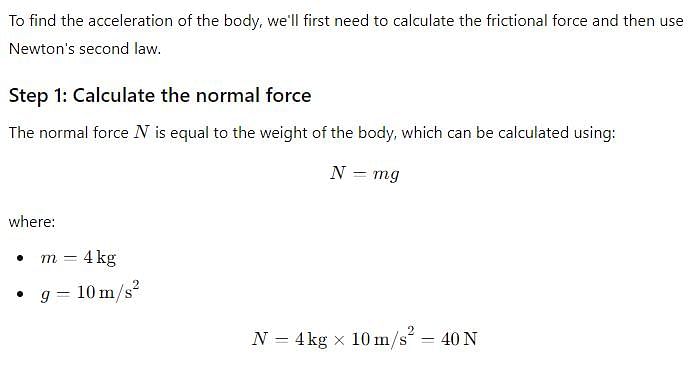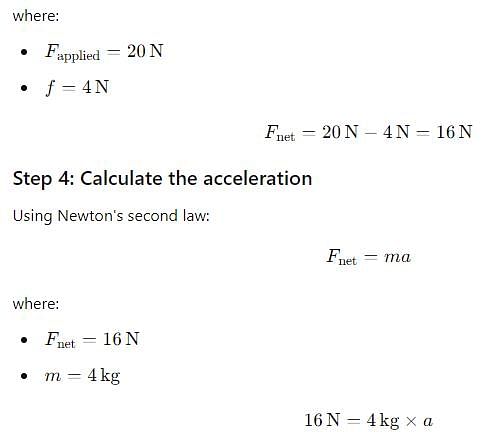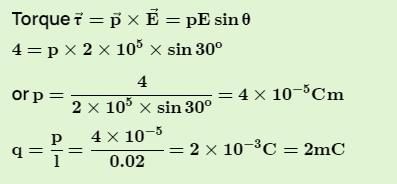HPSC PGT Physics Mock Test - 10 - HPSC TGT/PGT MCQ
30 Questions MCQ Test HPSC PGT Mock Test Series 2024 - HPSC PGT Physics Mock Test - 10
On which date is National Sports Day observed in India?
According to NEP 2020, what is the full form of ECCE?
| 1 Crore+ students have signed up on EduRev. Have you? Download the App |
Choose the pedagogical approach proposed in experimental learning under NEP-2020?
A boy of mass 40 kg is climbing a vertical pole at a constant speed. If the coefficient of friction between his palms and the pole is 0.8 and g = 10 m/s2 the horizontal force that he is applying on the pole is
In the pulley-block arrangement shown in figure, find the relation between acceleration of block A and B
If in a circular coil A of radius R, current I is flowing and in another coil B of radius 2R a current 2I is flowing, then the ratio of the magnetic fields BA and BB, produced by them will be
A man can swim with a speed of 4.0 km/h in still water. How long does he take to cross a river 1.0 km wide if the river flows steadily at 3.0 km/h and he makes his strokes normal to the river current? How far down the river does he go when he reaches the other bank?
The numerical ratio of average velocity to average speed is:
A bob of mass m, suspended by a string of length ℓ1 is given a minimum velocity required to complete a full circle in the vertical plane. At the highest point, it collides elastically with another bob of mass m suspended by a string of length ℓ2, which is initially at rest. Both the strings are mass-less and inextensible. If the second bob, after collision acquires the minimum speed required to complete a full circle in the vertical plane, the ratio ℓ1/ℓ2 is.
If the force acting on a point charge kept on the axis of an electric dipole is F, what will be the amount of force if the distance of the point charge is doubled from the dipole?
A coil of inductance 0.1 H is connected to an alternating voltage generator of voltage E = 100 sin (100t) volt. The current flowing through the coil will be
A force of 20 N is applied on a body of mass 4 kg kept on a rough surface having coefficient of friction 0.1. Find acceleration of body. Take g = 10 m/s2
How many directions are possible for the same horizontal range?
In the previous question, if the current is i and the magnetic field at D has magnitude B,
In a circuit an a.c. current and a d, c. current are supplied together. The expression of the instantaneous current is given as i = 3 + 6 sin wt. Then the rms value of the current is
A wheel has an angular acceleration of 4 rad/s². If it starts from rest, how many revolutions will it complete in 10 seconds?
Suppose our school is 1 km away from our house, and we go to school in the morning, and in the afternoon we come back. Then, the total displacement for the entire trip is:
In the circuit in figure we have ε1 = ε2 = 100V, R1 = 20Ω, R2 = 10 Ω, R3 = 40 Ω and R4 = 30 Ω. Find the reading of the ammeter (in A). Disregard the resistance of the battery and the ammeter.

Three positive charges are kept at the vertices of an equilateral triangle. We can make the potential energy of the system zero by adjusting the amount of charges. This statement is ______
The physical properties of electromagnetic waves are decided by their
Find the frequency of small oscillations of a thin uniform vertical rod of mass m and length L hinged at the point O as shown in the figure. The stiffness of each spring is k. Mass of the springs is negligible. The figure shows equilibrium position.
The average kinetic energy of a molecule in an ideal gas is
In hydrogen atom the angular momentum of the electron in the lowest energy state is
Four liters of a diatomic ideal gas ( λ =1.4) confined to a cylinder is subject to a closed cycle. Initially, the gas is at 1.00 atm and at 300 K. First, its pressure is tripled under constant volume. Then, it expands adiabatically to its original pressure. Finally, the gas is compressed isobarically to its original volume. Find the temperature at the end of the cycle
An electric dipole is placed at an angle of 30° with an electric field intensity 2 × 105 N/C. It experiences a torque equal to 4 N m. The charge on the dipole, if the dipole length is 2 cm, is





























